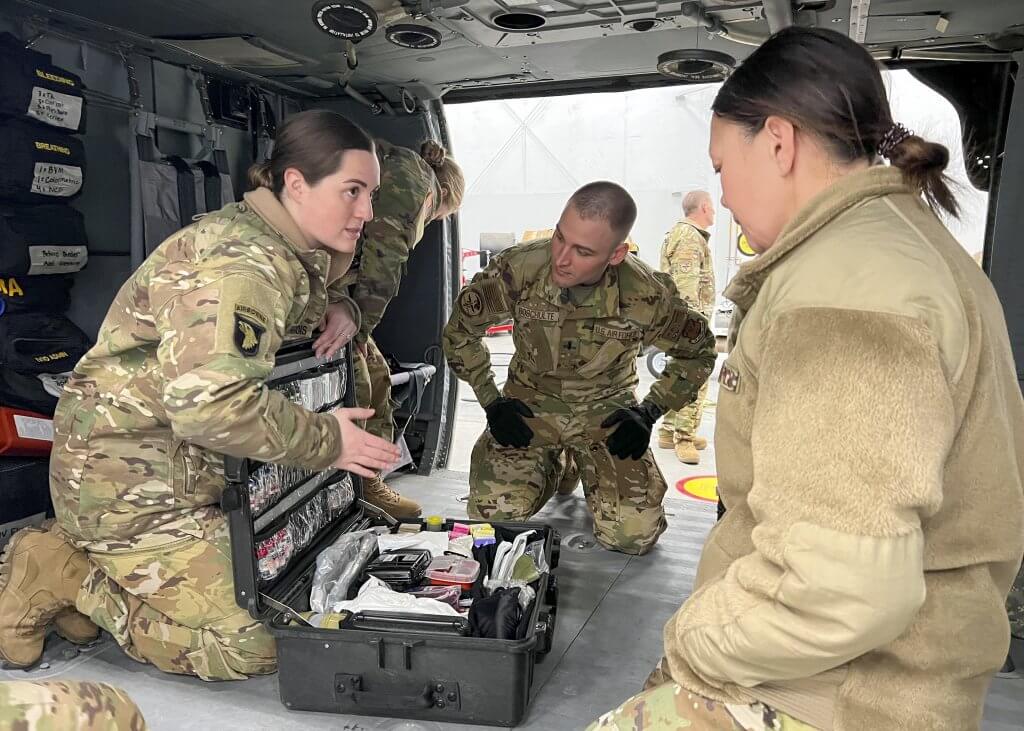Members from the 124th Medical Group trained with Idaho Army National Guard Soldiers on medical evacuations during their unit training assembly last week.
The airmen who participated in the training are part of the wing’s Critical Care Air Transport Team (CCATT) and were able to train with MEDEVAC Soldiers from Detachment 1, G Company, 1-168th Aviation Regiment on one of their UH-60 Black Hawk helicopters.
“The significance of this training is huge because it gives us an opportunity to train with the Army before being in a deployed environment,” said Air Force Senior Master Sgt. Virginia Holmgren, a respiratory therapist with the 124th CCATT. “Doing this training stateside allows us to see and learn about each other’s capabilities.”
A CCATT is composed of three highly specialized medical professionals — a critical care or emergency medicine physician, a critical care nurse and a respiratory therapist— who can turn any aircraft into a flying intensive care unit.
In contrast, the MEDEVAC soldiers from Golf Company operate with two pilots, one crew chief and one medic. Their role is to stabilize patients and transport them to a location where they can receive higher-level care.
RELATED: New fighter training enhances joint lethality with Hawaii ANG, Navy Reserve
“Part of this training is to get to know people and build relationships,” said Air Force Lt. Col. Valerie Hay, a nurse with the 124th CCATT. “We can both learn from each other because we all provide medical care.”
The airmen and soldiers from the different medic teams were able to work jointly and educate each other on service-specific equipment and procedures.
Traditionally, CCATT training is done on a large aircraft, but with the current times and mission needs, in-flight care is often needed in a helicopter. The 124th CCATT has trained on Black Hawks before, but this time they were able to work jointly and test their skills during an exercise, Hay said.
“We feel very fortunate that we actually have an Air Guard unit close by that we can do cross training with,” said Army 1st. Lt. Mary Jack, an aeromedical evacuations officer with the 1-168th AR.
The training started with a Black Hawk orientation, classroom presentations and practice evaluations using high-fidelity mannequins inside the helicopter.
“It gives the providers an opportunity to understand how constricted it really is when the doors are closed and you’re treating that patient in the aircraft,” Jack said. “It’s probably a little bit more chaotic and a little bit more constricted than what they’re used to.”
The final day of training culminated in a medical evacuation exercise testing the CCATT’s ability to responded to a request, treat and stabilize the mock patient, and then transport the patient to a Black Hawk.
“This is the first time when we can take everything we’ve learned so far and actually put it into a real-world situation,” Hay said. “It was beneficial to see each other’s capabilities so that if you do get put in that situation, you know what you have to get the mission done.”

